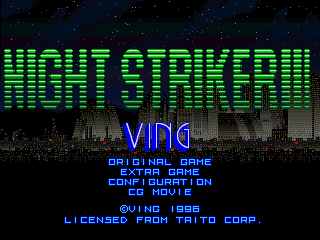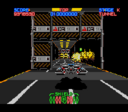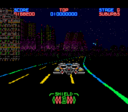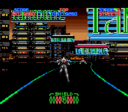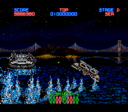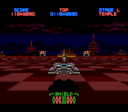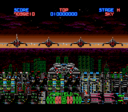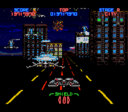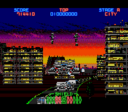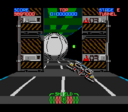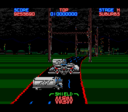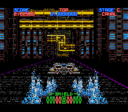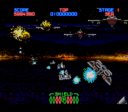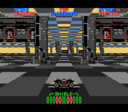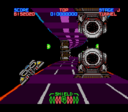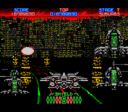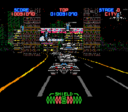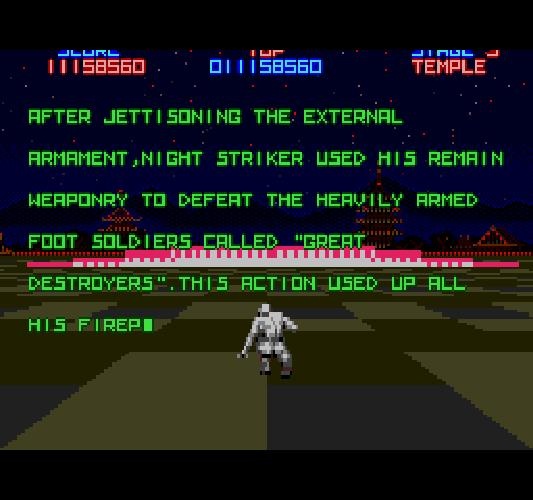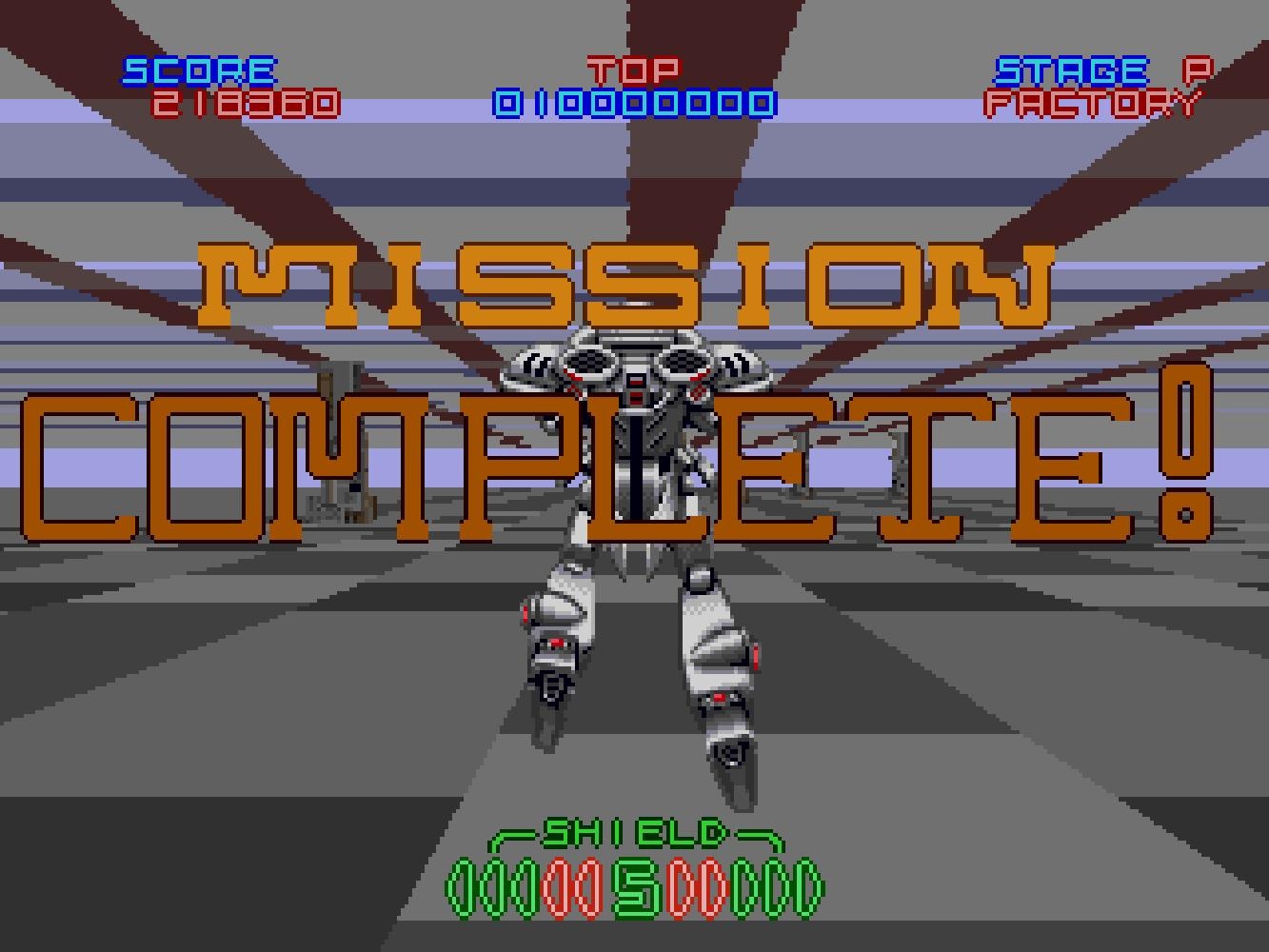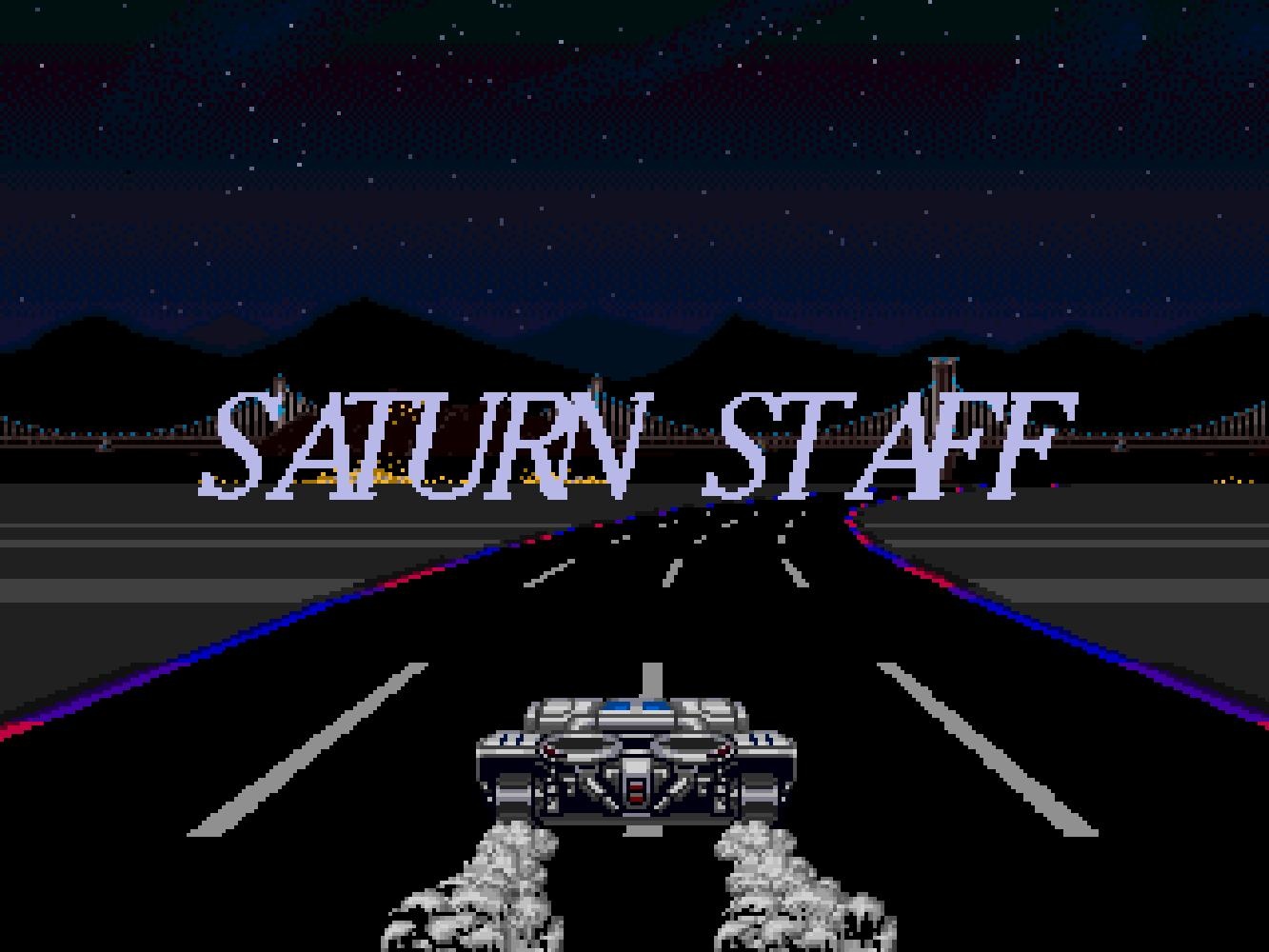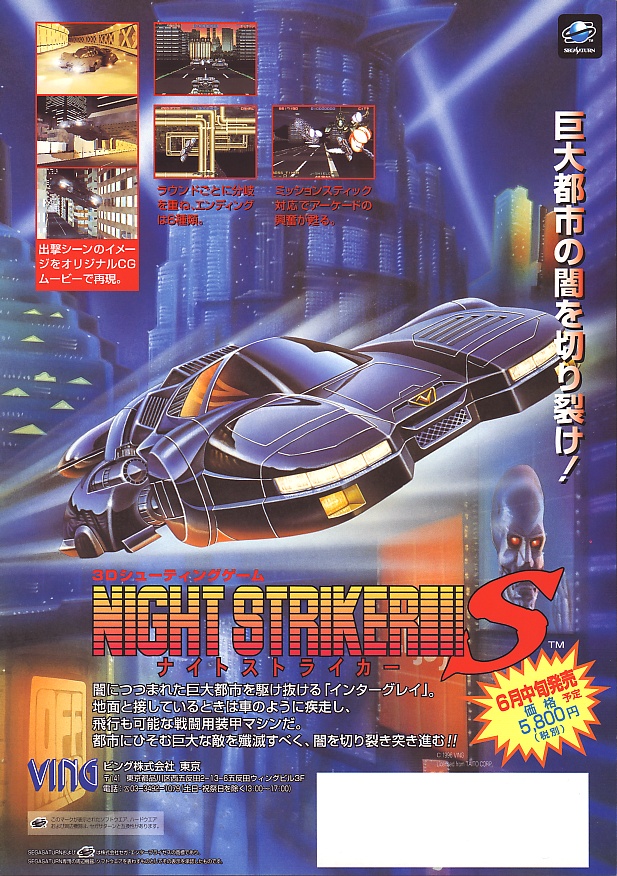|
|
| Line 32: |
Line 32: |
| | '''''{{PAGENAME}}''''' (ナイトストライカー) is an arcade game developed by [[Taito]]. It is a futuristic on-the-rails shooter which plays similarly to [[Sega]]'s ''[[Space Harrier]]'', with the player piloting a hover vehicle. | | '''''{{PAGENAME}}''''' (ナイトストライカー) is an arcade game developed by [[Taito]]. It is a futuristic on-the-rails shooter which plays similarly to [[Sega]]'s ''[[Space Harrier]]'', with the player piloting a hover vehicle. |
| | | | |
| − | The game was brought to the [[Sega Mega-CD]] in 1993, where it was graphically downscaled for the weaker hardware. It was also brought to the [[Sega Saturn]] as '''''Night Striker S''''' (ナイトストライカーS) in 1996. No versions have ever left Japan. | + | The game was brought to the [[Sega Mega-CD]] in 1993, where it was graphically downscaled for the weaker hardware. It was also brought to the [[Sega Saturn]] as '''''Night Striker S''''' (ナイトストライカーS) in 1996. The Mega-CD version was brought outside of Japan via the [[Mega Drive Mini 2]] in 2022. |
| | | | |
| | The soundtrack was composed by [[Zuntata]], Taito's in-house music team. | | The soundtrack was composed by [[Zuntata]], Taito's in-house music team. |
Revision as of 15:29, 14 July 2022
Night Striker (ナイトストライカー) is an arcade game developed by Taito. It is a futuristic on-the-rails shooter which plays similarly to Sega's Space Harrier, with the player piloting a hover vehicle.
The game was brought to the Sega Mega-CD in 1993, where it was graphically downscaled for the weaker hardware. It was also brought to the Sega Saturn as Night Striker S (ナイトストライカーS) in 1996. The Mega-CD version was brought outside of Japan via the Mega Drive Mini 2 in 2022.
The soundtrack was composed by Zuntata, Taito's in-house music team.
Story
The game is set in a futuristic city in 2049. A terrorist organisation has kidnapped Doctor Masker Lindberry and his daughter. The United Nations Special Service Agency has dispatched their agents to investigate, but to no avail. Its leader is leading a task force, code-named Night Striker, using armoured vehicles to rescue them and destroy the organisation.
Gameplay
<div class="bobtransform" style="transform:scale(1,Expression error: Unexpected < operator.); transform-origin:0% 0%; !important;">
<div style="width:200px; height:Expression error: Unexpected < operator.px;">
200px
Branching paths
The game is a rail shooter with a 3D perspective. The player controls a hover car and shoots enemies encountered during the stage. The car moves by holding in any direction with the D-pad. The vertical controls are inverted, so  ascends and
ascends and  dives. The car positions itself back in the center of the screen when the player is not holding a direction. The player does not control the speed at which the car travels through the stages. The car shoots with
dives. The car positions itself back in the center of the screen when the player is not holding a direction. The player does not control the speed at which the car travels through the stages. The car shoots with  ,
,  , or
, or  ;
;  can be held for continuous fire.
can be held for continuous fire.
At the end of each stage, there is a boss. After it is defeated, the player is presented with a choice between two routes, like OutRun. There are 21 stages, but the player only needs to complete 6 to complete the game. Stages repeat themes and bosses. Certain stages contain obstacles such as barriers which must be maneuvered around. In the final stages, the car transforms into different vehicles such as a motorbike or a robot. The game features different endings depending on which route is taken.
The car has a shield that can absorb a certain number of hits before being destroyed. The car is harmed by enemy fire or running into obstacles, but it is not harmed by touching walls or ceilings. The player is given another shield point after completing each stage. If the shield has run out, the car can sustain one more hit before it is destroyed and the game is over. The game can be continued if the player has credits remaining.
Stages
Versions
The Mega-CD version of the game takes advantage of the system's specialized sprite-scaling hardware, though it has been criticized for appearing excessively pixelated. This version features an arranged soundtrack; the other home versions only have the original arcade synth soundtrack.
The Sega Saturn version has clearer visuals and supports the 3D Control Pad and Mission Stick for analogue control; the original arcade cabinet uses a flight stick similar to the Mission Stick. This version includes a bonus mode with six exclusive stages, though this mode does not have branching paths.
Production credits
Mega-CD version
- Producer: Yoshio Imamura
- Director: Takashi Shiokawa
- Programmers: Daikoku Hisaya, Yoshihiro Yokota
- Artists: Munenori Morikawa, Satomi Yokose, Yoko Gotan, Shrine
- Sound
- Arranged by: Hisayoshi Ogura, Tamayo Kawamoto, Yasuhisa Watanabe, Shuichiro Nakazawa, Masahiko Takaki
- Mix Engineer: Masao Saotome
- Assistant Engineer: Yoshihiro Rakumitsu
- Manipulated by: Masaki Sekishima
- Special Thanks: Kenshi Kaito, Eiji Takeshima, Anthony Gurr, Yoichi Sato, Pony Canyon Inc., Scytron & Art Inc.
- (C)Taito Corporation 1993 All Rights Reserved
Source: In-game credits[5]
Saturn version
Create Staff
- Producer: Tohru Sugawara
- Director: Kenshi Kaito
- Software: Tohru Sugawara, Hideki Hashimoto, Toshiaki Tsukano, Tmr-Win Iromust, Takashi Kitabayashi
- Character: Kohzoh Igarashi, Minori Ishino, Yakako Kojima, Kenshi Kaito
- Hardware: Toshiyuki Sanada
- Electric: Tomio Takeda
- Mechanic: Tohru Yamamoto, Tohru Hirata, Tomio Suzuki, Nobuyuki Iwasaki
- Design: Shinobu Sekiguchi, Akio Nomura
- Sound: Music Composed, Mar., S.E Editor, Nui&Yasu, By Team Zuntata
- Executive Producer: Keisuke Hasegawa
- Special thanks to: Many Other People
Source: In-game credits[6]
Saturn Staff
- President: Ryozo Sugawara
- Director: Takashi Noto
- Programmer: Atsushi Taguchi, Nonchi, Takumi Amano
- Graphic: Naohiro Washio, Hiroaki Matsukawa
- CG Movie: Hisanori Saitou
- Data Management: Naoki Inaba
- Promotion And Manual Writer: Ryusei Baba
- Marketing: Junko Shiihashi
- Special Thanks: Taito Corporation, Yuu House Co., Ving Co., Team Zuntata, Kenshi Kaito, Masaya Konya, Toru Hosaka, Taka, Kanta Watanabe, Masayuki Kokubu, Tetsuya Tanabe, Yosuke Nakano, Toshiyuki Kikuchi, Kohshi Nagato, Yoshimasa Hagiwara, Goro Kashima, And You !!
Source: In-game credits[7]
Magazine articles
- Main article: Night Striker/Magazine articles.
Promotional material
Physical scans
Mega-CD version
| {{{{{icon}}}|L}}
|
Division by zero.
|
Based on
0 review
|
Saturn version
| {{{{{icon}}}|L}}
|
Division by zero.
|
Based on
0 review
|
| Sega Retro Average
|
| Publication
|
Version
|
Score
|
|
|
| Saturn, JP
|
  Cover
|
 Spinecard  Disc |
Technical information
ROM dump status
| System |
Hash |
Size |
Build Date |
Source |
Comments |
|
|
|
| ✔
|
|
538,777,344
|
|
CD (JP)
|
T-11014
|
|
|
|
| ✔
|
|
446,546,016
|
1996-05-06
|
CD-ROM (JP)
|
T-19901G V1.300
|
|
|
|
Track list
Mega-CD version
| 2. commune (0:36)
|
| From: NAME SET
|
| 3. commune (Arrange) (0:43)
|
| From: NAME SET
|
| 6. URBAN TRAIL (1:26)
|
| From: 市街のテーマ
|
| 7. URBAN TRAIL (Arrange) (1:32)
|
| From: 市街のテーマ
|
| 8. TRANCE PLANET IN BLUE (1:48)
|
| From: 郊外のテーマ
|
| 9. TRANCE PLANET IN BLUE (Arrange) (1:49)
|
| From: 郊外のテーマ
|
| 10. BRAIN WORKER (1:14)
|
| From: 地下工場のテーマ
|
| 11. BRAIN WORKER (Arrange) (1:15)
|
| From: 地下工場のテーマ
|
| 12. AQUARIUS (1:25)
|
| From: 海上のテーマ
|
| 13. AQUARIUS (Arrange) (1:27)
|
| From: 海上のテーマ
|
| 14. FLY AWAY (1:24)
|
| From: 上空のテーマ
|
| 15. FLY AWAY (Arrange) (1:24)
|
| From: 上空のテーマ
|
| 16. TERARIST (1:51)
|
| From: ビル街のテーマ
|
| 17. TERARIST (Arrange) (1:51)
|
| From: ビル街のテーマ
|
| 19. Ma-Gu-Ri-Vu (Arrange) (1:33)
|
| 20. BURNING ROAD (1:25)
|
| From: 地下道のテーマ
|
| 21. BURNING ROAD (Arrange) (1:24)
|
| From: 地下道のテーマ
|
| 24. BOSS 1 (Arrange) (1:33)
|
| 26. BOSS 2 (Arrange) (1:14)
|
| 28. BOSS 3 (Arrange) (1:30)
|
| 30. BOSS 4 (Arrange) (1:37)
|
| 32. BOSS 5 (Arrange) (1:30)
|
| 34. BOSS 6 (Arrange) (1:44)
|
| 35. Ma-Gu-Ri-Vu (Intro) (1:05)
|
| 37. ROUND CLEAR (Arrange) (1:27)
|
| 38. Chimere (1:45)
|
 シーメール シーメール
|
| From: ENDING
|
| 39. Chimere (Arrange) (1:48)
|
 シーメール シーメール
|
| From: ENDING
|
► Running time: 49:25
Saturn version
| 2. Opening - Urban Trail (2:57)
|
| From: Opening - City Stage
|
| 5. Trance Parlent In Blue (3:34)
|
| From: Suburb Stage
|
| 7. Brain Worker (2:25)
|
| From: Underground Factory Stage
|
| 9. Aquarius (2:26)
|
| From: Maritime Stage
|
| 10. Fly Away (2:30)
|
| From: Sky Stage
|
| 12. Terarist (3:40)
|
| From: Building Quarters Stage
|
| 14. Ma-Gu-Ri-Vu (3:05)
|
| From: Temple Stage
|
| 15. Burning Road (2:42)
|
| From: Subterranean Tunnel Stage
|
| 17. Chimere (1:45)
|
 シーメール シーメール
|
| From: Ending
|
| 18. Commune (0:56)
|
| From: Name Set
|
| 19. Urban Trail (2:37)
|
| From: City Stage
|
► Running time: 37:28
This game has extra content which can be viewed when accessing the disc on a PC.
Saturn (JP) Extra files
| Folder / File
|
Type
|
Size
|
description
|
| ABS.TXT
|
TXT (Abstract)
|
792
|
Story of this game.
|
| BIB.TXT
|
TXT (Bibliographiced)
|
160
|
About original game
|
| CPY.TXT
|
TXT (Copyright)
|
43
|
Copyright
|
References
- ↑ File:NightStriker Saturn JP Box Back.jpg
- ↑ 2.0 2.1 https://sega.jp/fb/segahard/ss/soft_licensee2.html (Wayback Machine: 2020-03-20 23:05)
- ↑ 3.0 3.1 https://sega.jp/fb/segahard/mcd/soft_licensee.html (Wayback Machine: 2019-06-10 17:56)
- ↑ Sega Saturn Magazine, "1996-05 (1996-03-22)" (JP; 1996-03-08), page 27
- ↑ File:NightStriker MCD JP SSCredits.pdf
- ↑ File:NightStrikerS Saturn JP SSEnding Or.pdf
- ↑ File:NightStrikerS Saturn JP SSEnding Ex.pdf
- ↑ Beep! MegaDrive, "June 1993" (JP; 1993-05-08), page 24
- ↑ Dengeki Mega Drive, "June 1993" (JP; 1993-05-xx), page 31
- ↑ Famitsu, "1993-06-04" (JP; 1993-05-21), page 39
- ↑ GameFan, "Volume 1, Issue 7: June 1993" (US; 1993-xx-xx), page 17
- ↑ Game Power, "Settembre 1993" (IT; 1993-0x-xx), page 98
- ↑ Sega Mega Drive Advanced Gaming, "September 1993" (UK; 1993-07-29), page 50
- ↑ Mega, "August 1993" (UK; 1993-07-15), page 52
- ↑ Mega Action, "August 1993" (UK; 1993-07-15), page 32
- ↑ MegaTech, "August 1993" (UK; 1993-07-20), page 76
- ↑ Mean Machines Sega, "September 1993" (UK; 1993-07-30), page 56
- ↑ Sega Power, "September 1993" (UK; 1993-08-05), page 52
- ↑ Sega Pro, "September 1993" (UK; 1993-08-12), page 64
- ↑ Sega Saturn Magazine, "September 1995" (JP; 1995-08-08), page 85
![]() ascends and
ascends and ![]() dives. The car positions itself back in the center of the screen when the player is not holding a direction. The player does not control the speed at which the car travels through the stages. The car shoots with
dives. The car positions itself back in the center of the screen when the player is not holding a direction. The player does not control the speed at which the car travels through the stages. The car shoots with ![]() ,
, ![]() , or
, or ![]() ;
; ![]() can be held for continuous fire.
can be held for continuous fire.

